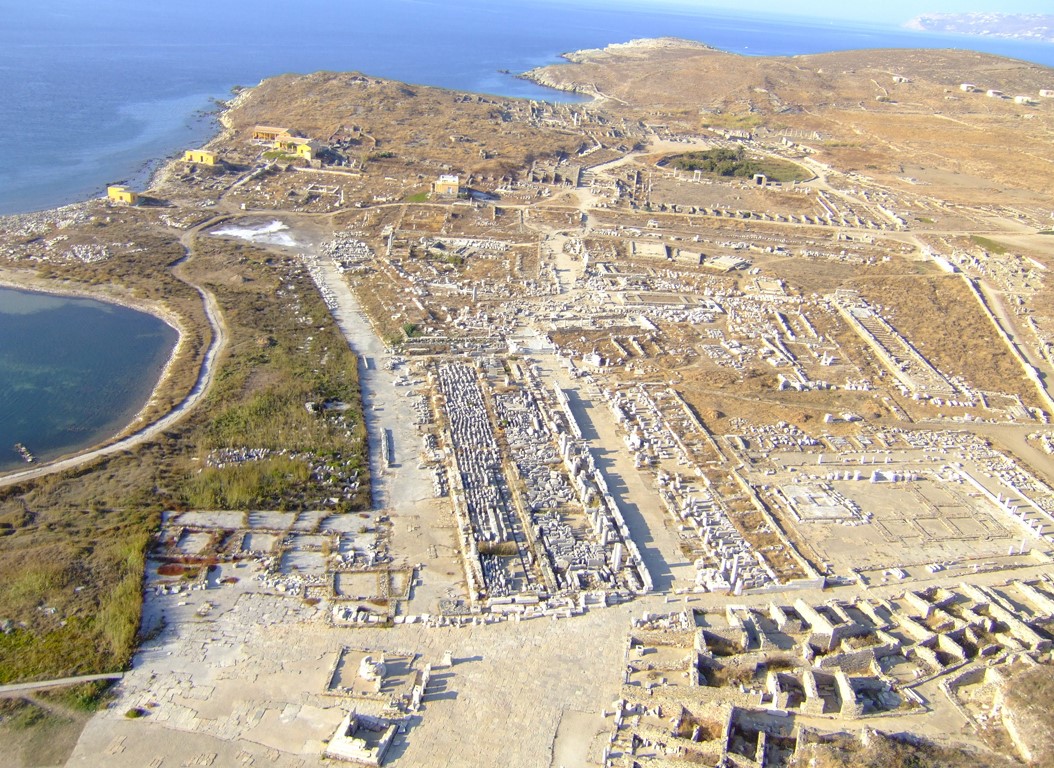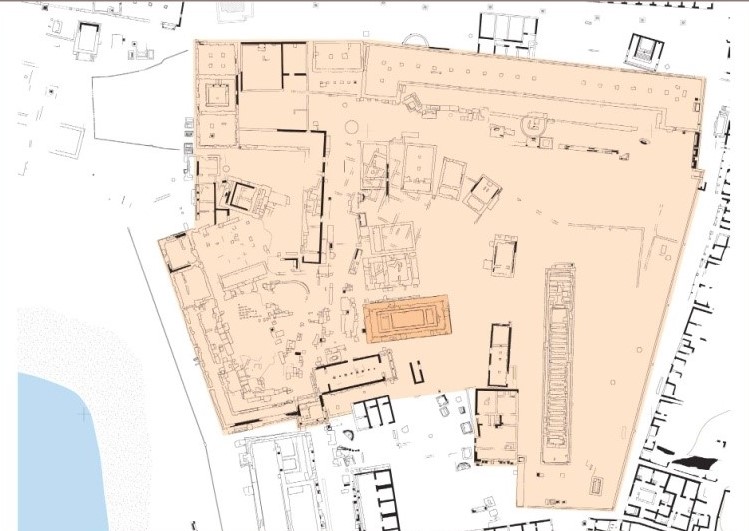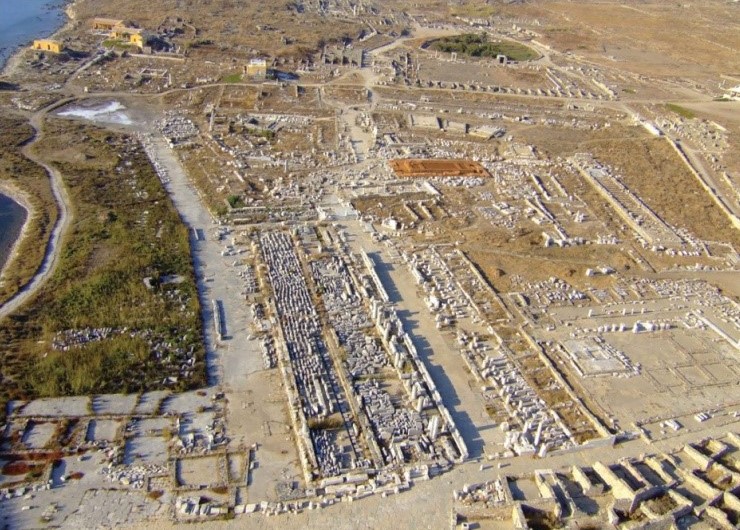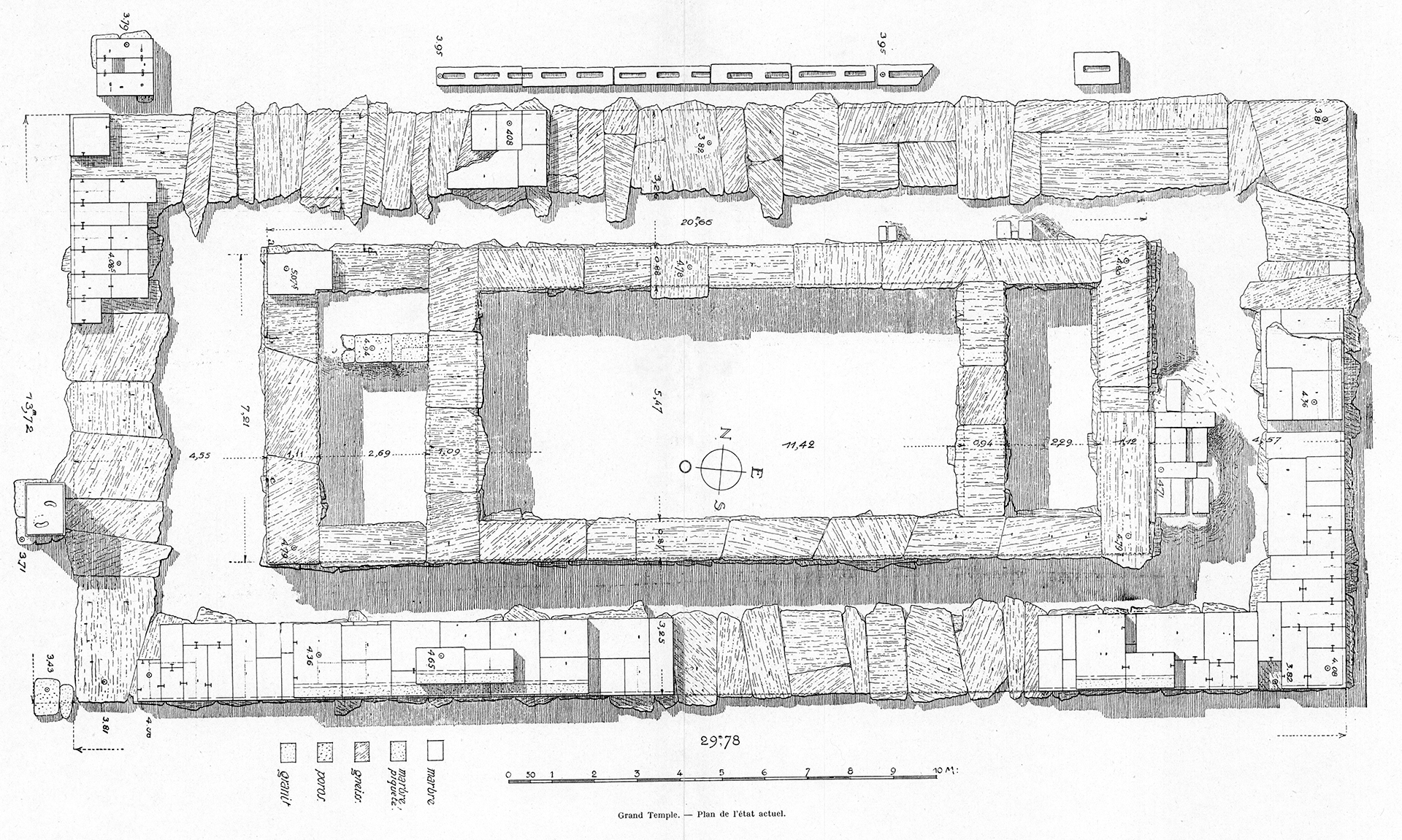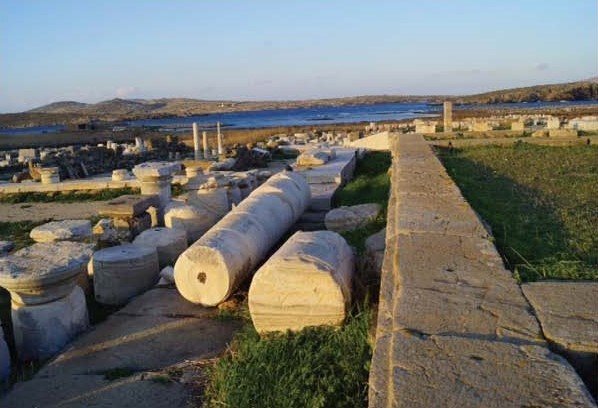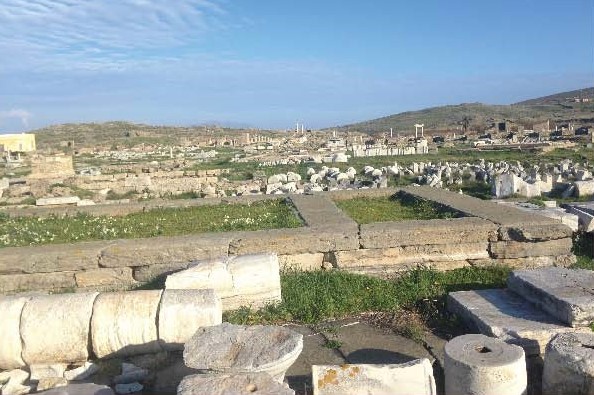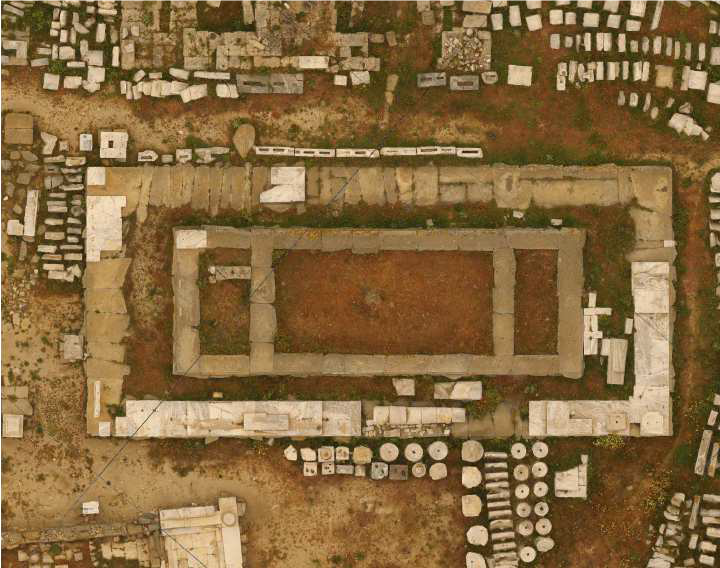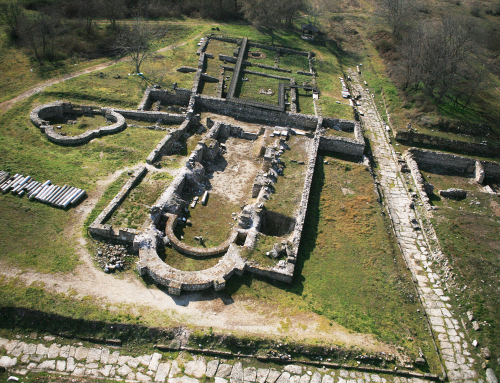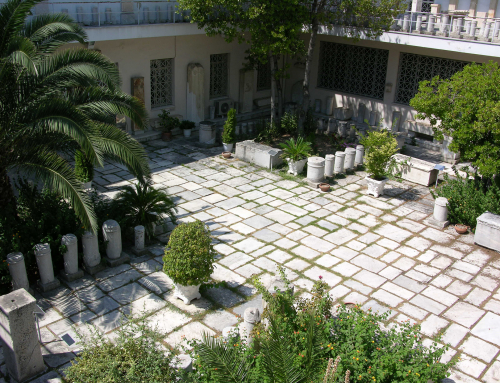Delos, “the most sacred of the islands” [hierotáti néson]
The island of Delos is a rocky ridge of about 5 km of length (running from North to South) and 0,13 km of width. It is widely known as a shiny island because of the presence of gneiss and granit which reflect the sunlight most time of the year. In ancient literature Delos is described to had been a floating rock which, after the birth of the twins Apollo and Artemis, two of the most important gods of greek pantheon, by Leto was stabilized on columns of diamond in the heart of the Aegean sea.
Delos was firstly been inhabited during the Early Cycladic Period. Remains of a settlement from the 3rd mill. BC.were found on the highest peak of the island, mount Cynthus of 112m of altitude. A Mycenaean settlement of the 2nd mill. BC. has been discovered in the valley of the western coast (at the North), where is the most protected cove of the island. Upon those remains the Sanctuary of Artemis and Apollo was founded, and it is well-known from the Homeric period.
Delos and especially its Sanctuary, became through time the center of interest especially to the political forces of the Hellenic antiquity. The predominance of Naxos island on Delos is evident through buildings such as the “Oikos of the Naxians” and monumental offerings such as the colossal statue of Apollo and the Terrace of the Lions.
On the other hand, Athens was the city that influenced the destiny of the island the most. During 478 BC, the famous Delian League was founded on the island of Delos. Nevertheless, it was then turned out to be an Athenian hegemony. In 454 BC the Athenians moved the treasury of the League to Athens. In 426/5 BC the Athenians purified Delos completely, thus they forced the Delians to remove their ancestor’s tombs on the nearby island of Rheneia, demonstrating their sovereignty in that way.
During 4th cent. BC new political forces stake out the hegemony of the Hellenic world. The Athenian control was preserved until 314 BC, when Delos was pronounced independent. Throughout the period of the Delian independence, the Hellenistic kings compete to show up reverence to the god founding some very important monuments and offerings on the island. By then, Delos gradually flourishes to be an important commercial port. More and more merchants and marines were attracted to it, because of its increasing economy. The end of this success story is determined in 168 BC, with the defeat of Perseas, the Macedonian king, by the Romans, at Pydna. In 167 BC, the Roman Republic ceded the island of Delos to the Athenians, for a second time. The latter colonized the island and forced the Delians to exile.
The Romans proclaimed Delos a free port. The tax-free condition attracted a large number of entrepreneurs arriving from East and from West. The population of the island was importantly increased and the construction activity was very intensive. A huge economical progress took place. At that point foreigners counted more than the Athenians. Meanwhile, the Italian community was extremely powered on Delos. Numerous new and luxurious houses, as well as new Agoras, sanctuaries and clubs were built. Shipowners, agents and merchants founded associations and constructed building complexes, where they worshiped their own gods and they developed their commercial interests (there were Egyptians, Syrians, Hebrews, Beirutians, Italians).
Rome was in the beginning in favor with Delos but, afterwards, that was the cause for the latter’s destruction. In 88 BC, during the war of Mithridates against the Romans, the former attacked and destroyed the island. Another catastrophe came in 69 BC by the pirates of Athenodorus, an ally of Mithidates.
In the first centuries A.D. the commerce on Delos recessed; the luxurious villas were transformed in laboratories. Nevertheless, the Athenians were still the rulers of the island. By the 6th cent. AD Delos became inhabited.
The propagation of Christianity to the inhabitants of Delos are revealed by the Early Christian basilicas found on the island. Delos was also the seat of the Bishop at that time.
The ancient glory of Delos came back in mind to the western world during Renaissance and through travelers. In 1873 the French School of Athens (École Française d’Athènes) started an excavation campaign, which revealed some of the most important parts of the religious, residential, commercial, political and cultural history of Delos.





